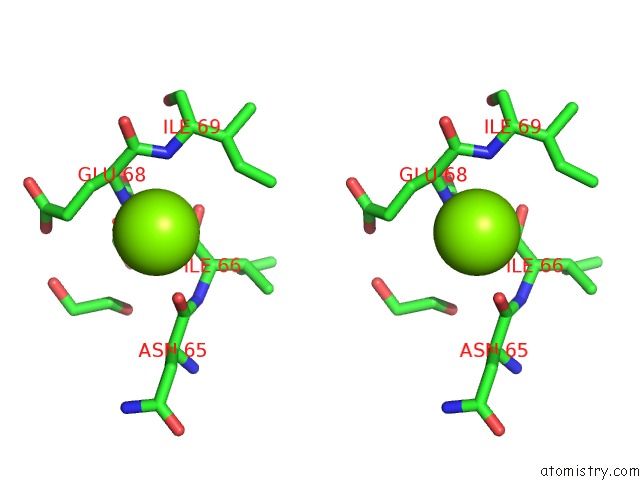Magnesium »
PDB 5pkk-5pln »
5plb »
Magnesium in PDB 5plb: Pandda Analysis Group Deposition -- Crystal Structure of JMJD2D After Initial Refinement with No Ligand Modelled (Structure 132)
Protein crystallography data
The structure of Pandda Analysis Group Deposition -- Crystal Structure of JMJD2D After Initial Refinement with No Ligand Modelled (Structure 132), PDB code: 5plb
was solved by
N.M.Pearce,
T.Krojer,
R.Talon,
A.R.Bradley,
M.Fairhead,
R.Sethi,
N.Wright,
E.Maclean,
P.Collins,
J.Brandao-Neto,
A.Douangamath,
Z.Renjie,
A.Dias,
M.Vollmar,
J.Ng,
A.Szykowska,
N.Burgess-Brown,
P.E.Brennan,
O.Cox,
U.Oppermann,
C.Bountra,
C.H.Arrowsmith,
A.Edwards,
F.Von Delft,
with X-Ray Crystallography technique. A brief refinement statistics is given in the table below:
| Resolution Low / High (Å) | 29.49 / 1.49 |
| Space group | P 43 21 2 |
| Cell size a, b, c (Å), α, β, γ (°) | 71.665, 71.665, 150.762, 90.00, 90.00, 90.00 |
| R / Rfree (%) | 15.1 / 17.8 |
Other elements in 5plb:
The structure of Pandda Analysis Group Deposition -- Crystal Structure of JMJD2D After Initial Refinement with No Ligand Modelled (Structure 132) also contains other interesting chemical elements:
| Nickel | (Ni) | 1 atom |
| Zinc | (Zn) | 1 atom |
Magnesium Binding Sites:
The binding sites of Magnesium atom in the Pandda Analysis Group Deposition -- Crystal Structure of JMJD2D After Initial Refinement with No Ligand Modelled (Structure 132)
(pdb code 5plb). This binding sites where shown within
5.0 Angstroms radius around Magnesium atom.
In total only one binding site of Magnesium was determined in the Pandda Analysis Group Deposition -- Crystal Structure of JMJD2D After Initial Refinement with No Ligand Modelled (Structure 132), PDB code: 5plb:
In total only one binding site of Magnesium was determined in the Pandda Analysis Group Deposition -- Crystal Structure of JMJD2D After Initial Refinement with No Ligand Modelled (Structure 132), PDB code: 5plb:
Magnesium binding site 1 out of 1 in 5plb
Go back to
Magnesium binding site 1 out
of 1 in the Pandda Analysis Group Deposition -- Crystal Structure of JMJD2D After Initial Refinement with No Ligand Modelled (Structure 132)

Mono view

Stereo pair view

Mono view

Stereo pair view
A full contact list of Magnesium with other atoms in the Mg binding
site number 1 of Pandda Analysis Group Deposition -- Crystal Structure of JMJD2D After Initial Refinement with No Ligand Modelled (Structure 132) within 5.0Å range:
|
Reference:
N.M.Pearce,
T.Krojer,
A.R.Bradley,
P.Collins,
R.P.Nowak,
R.Talon,
B.D.Marsden,
S.Kelm,
J.Shi,
C.M.Deane,
F.Von Delft.
A Multi-Crystal Method For Extracting Obscured Crystallographic States From Conventionally Uninterpretable Electron Density. Nat Commun V. 8 15123 2017.
ISSN: ESSN 2041-1723
PubMed: 28436492
DOI: 10.1038/NCOMMS15123
Page generated: Mon Sep 30 02:05:00 2024
ISSN: ESSN 2041-1723
PubMed: 28436492
DOI: 10.1038/NCOMMS15123
Last articles
Zn in 9MJ5Zn in 9HNW
Zn in 9G0L
Zn in 9FNE
Zn in 9DZN
Zn in 9E0I
Zn in 9D32
Zn in 9DAK
Zn in 8ZXC
Zn in 8ZUF